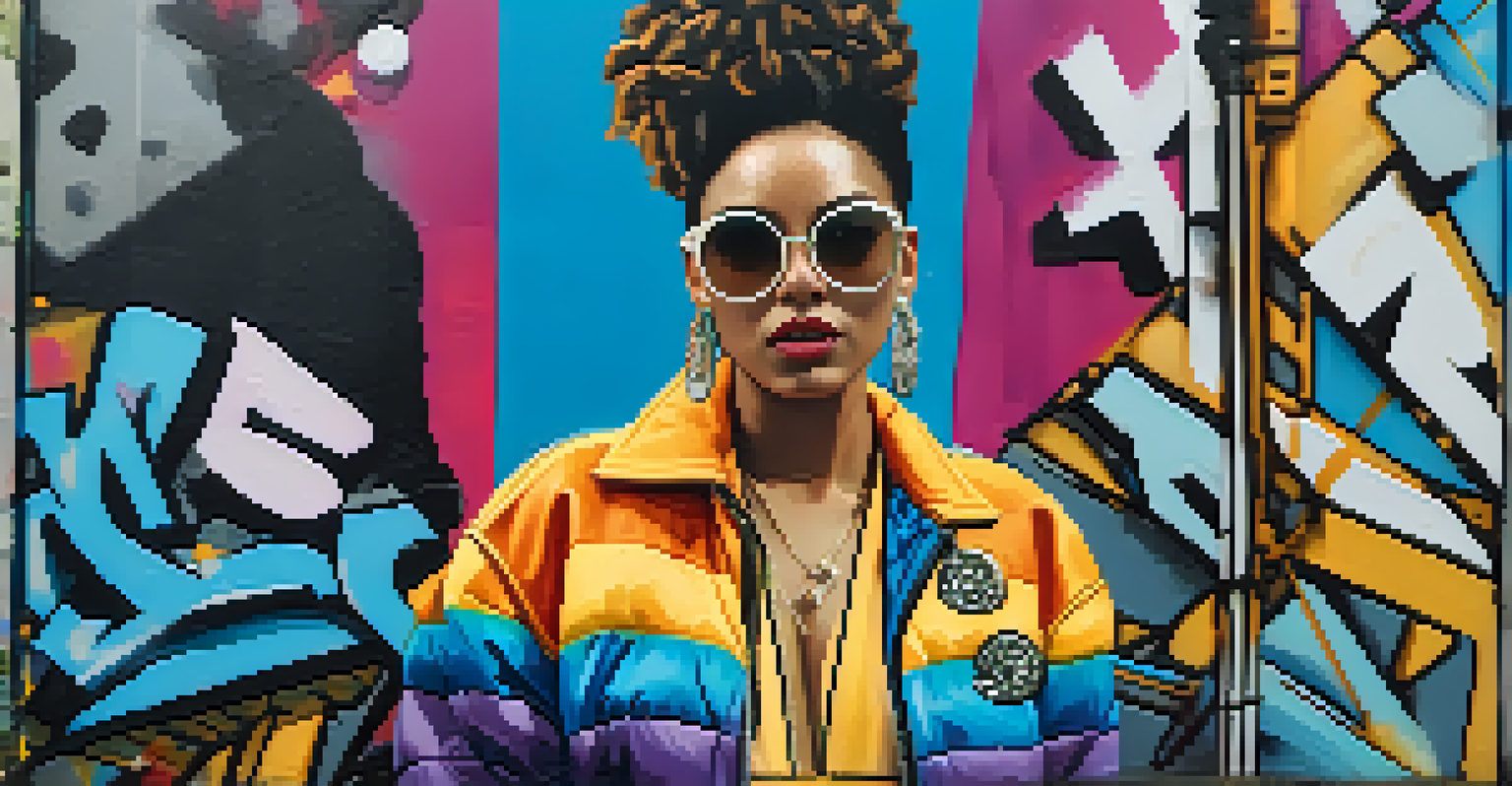Innovative Fashion Designers Challenging Gender Stereotypes

Redefining Gender Norms in Fashion
Fashion has long been a reflection of societal norms, but today, many designers are challenging the traditional gender boundaries. By creating collections that blend masculine and feminine aesthetics, they are encouraging individuals to express themselves authentically. This shift not only promotes inclusivity but also liberates people from the constraints of outdated gender stereotypes.
Fashion is the armor to survive the reality of everyday life.
For instance, the rise of unisex clothing lines has made waves in the industry, allowing everyone to wear what resonates with them. These designers celebrate individuality, crafting pieces that transcend the binary understanding of gender. As a result, fashion becomes a canvas for personal expression rather than a set of rigid rules.
This reimagining of gender norms is not just about clothing; it’s about fostering a culture where everyone feels seen and accepted. As more designers embrace this philosophy, the conversation around gender in fashion continues to evolve, paving the way for future innovations.
Trailblazing Designers Leading the Charge
Among the designers who are boldly challenging gender norms is Jonathan Anderson, known for his brand JW Anderson. His collections often feature pieces that blur the lines between genders, showcasing garments that can be worn by anyone. By doing so, Anderson not only pushes creative boundaries but also invites consumers to reconsider their fashion choices.

Similarly, Gucci’s creative director Alessandro Michele has been a vocal advocate for breaking free from traditional gender classifications. His collections often include elements that challenge the conventional expectations of both men’s and women’s fashion. This approach has resonated with a diverse audience, empowering them to explore their own styles.
Fashion Breaks Gender Barriers
Designers are challenging traditional gender norms by creating inclusive collections that promote self-expression.
These trailblazers are inspiring a new generation of designers to think outside the box. Their influence is undeniable, as they create spaces within the fashion world that welcome everyone, regardless of gender identity.
The Role of Social Media in Fashion Diversity
Social media has become a powerful platform for change in the fashion industry. Designers, influencers, and consumers alike are using these channels to showcase diverse styles that defy gender norms. This visibility is crucial in normalizing the idea that fashion should be inclusive and accessible to all.
Clothes aren’t going to change the world, the women who wear them will.
Platforms like Instagram and TikTok allow emerging designers to share their visions with a global audience, often leading to viral trends that embrace non-binary fashion. For example, hashtags like #GenderNeutralFashion are used to connect individuals who are passionate about this movement, fostering a sense of community and support.
As social media continues to shape trends, it also encourages brands to listen to their audiences. This feedback loop creates an environment where innovation thrives, enabling fashion to evolve alongside societal values.
Consumer Demand for Gender Fluidity in Fashion
Today's consumers are increasingly demanding more inclusivity in fashion, leading brands to respond with gender-fluid designs. This shift in consumer preferences reflects a broader societal change, where many individuals identify outside traditional gender categories. As a result, designers are recognizing the importance of catering to this diverse audience.
For instance, brands like Telfar and Collina Strada have gained popularity for their gender-neutral offerings. These designers focus on creating garments that prioritize comfort and expression over conformity to gendered expectations. Their success demonstrates the commercial viability of breaking away from traditional fashion norms.
Social Media Fuels Fashion Diversity
Platforms like Instagram and TikTok amplify diverse fashion styles, fostering community and encouraging inclusivity.
Ultimately, the consumer's voice is a powerful catalyst for change. As more people advocate for gender diversity in fashion, it becomes clear that the industry must adapt to meet these evolving demands.
The Impact of Cultural Shifts on Fashion Design
Cultural movements play a significant role in shaping fashion trends, particularly in the realm of gender expression. The rise of movements advocating for LGBTQ+ rights and gender equality has sparked a greater awareness of the need for representation in fashion. Designers are increasingly drawing inspiration from these movements, infusing their collections with messages of empowerment and acceptance.
For example, during Pride Month, many designers showcase collections that celebrate individuality and inclusivity. These initiatives not only raise awareness but also contribute to a larger dialogue about gender identity in society. By aligning their brands with cultural values, designers are making meaningful contributions to the conversation around gender in fashion.
As cultural shifts continue to influence the fashion landscape, designers are challenged to remain relevant and responsive. This dynamic relationship between culture and fashion fosters innovation, encouraging designers to explore new ideas and perspectives.
The Future of Gender in Fashion
Looking ahead, the future of fashion appears to be increasingly inclusive and diverse. As designers continue to challenge gender stereotypes, we can expect to see a broader range of styles that cater to all identities. This evolution not only reflects changing societal attitudes but also fosters a more vibrant and creative fashion landscape.
Moreover, as more brands adopt gender-neutral approaches, consumers will have greater access to clothing that resonates with their personal identity. This shift will encourage self-expression and authenticity in fashion choices, allowing individuals to embrace their unique styles without fear of judgment.
Consumer Demand Shapes Fashion Trends
As consumers advocate for gender fluidity, brands are responding with designs that prioritize comfort and individuality.
The journey toward a more inclusive fashion industry is ongoing. However, with each innovative designer and supportive consumer, the momentum toward breaking down gender barriers in fashion continues to grow.
Conclusion: Embracing Individuality Through Fashion
In conclusion, innovative fashion designers are playing a crucial role in challenging and redefining gender stereotypes. By creating collections that embrace diversity and individuality, they are paving the way for a more inclusive fashion industry. As consumers, we have the power to support these designers and advocate for change by choosing brands that reflect our values.
Fashion should be a celebration of who we are, free from the constraints of traditional gender norms. By embracing and celebrating individuality, we not only enrich our own lives but also contribute to a more accepting society.

As we move forward, let’s continue to champion those who dare to challenge the status quo, ensuring that the future of fashion remains a vibrant tapestry of diverse expressions.